Moon, planets; more StarLock setups;
M13, M57, and M16 imaging
Posted: 4 September 2016
Monsoon season clouds returned on Wednesday, 31 August 2016. Was mostly cloudy on Thursday, 1 September, at Cassiopeia Observatory. That evening I went to a meeting of the Oracle Dark Skies Committee. On the way a heavy rainshower occurred along the highway as sunset approached. It created a pretty double rainbow:
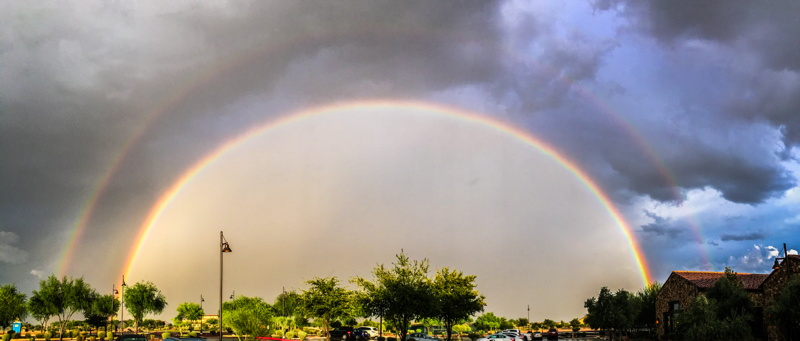
Click or tap on image for larger version
Received 0.18" rain from the shower. Cloudy skies continued until Saturday evening, 3 September.
|
Open: Saturday, 3 September 2016, 1826 MST Temperature: 94°F |
Session: 1007 Conditions: Mostly clear |
Equipment Used:
12" f/8 LX600 w/StarLock
Wired AutoStar II handset
2" 24mm UWA eyepiece
2" 8-24mm zoom eyepiece
Camera:
iPhone 6s Plus
D7200 DSLR
1833 MST: LX600 ON, StarLock OFF, High Precision OFF.
1837 MST: viewed the crescent Moon, 102X.
1847 MST: sunset.
1854 MST: viewed the Moon and Venus, 12x70 binoculars. They were separated by just slightly more than the binoculars field-of-view (FOV).
1901 MST: resumed observing the Moon, 102X. Took this handheld iPhone 6s Plus photo, afocal 102X:
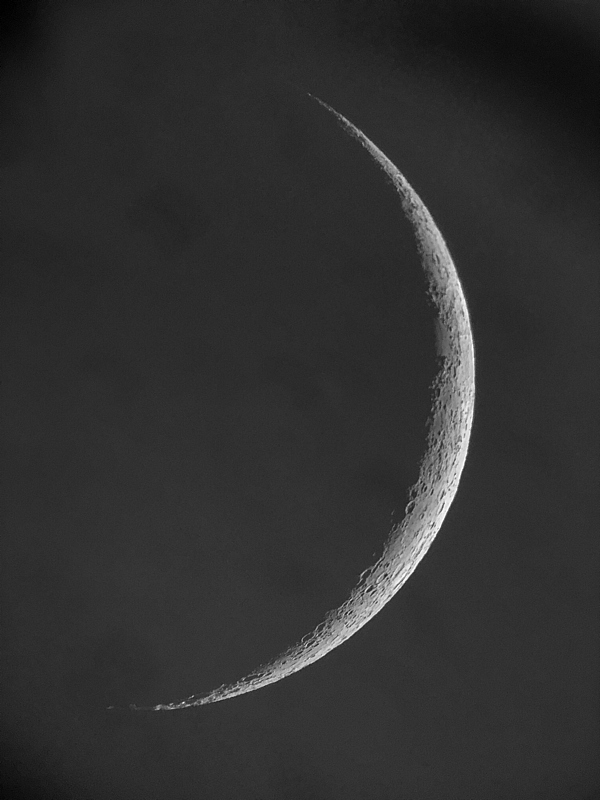
1905 MST: viewed Jupiter, 102X, very low in the western sky. Could only see the equatorial belts. Then viewed Venus, 102X. Its gibbous phase was visible.
1910 MST: took this photo of the western sky using the D7200 DSLR with 70-300mm lens, f/4.5, 1/30sec, ISO 400, FL 75mm:
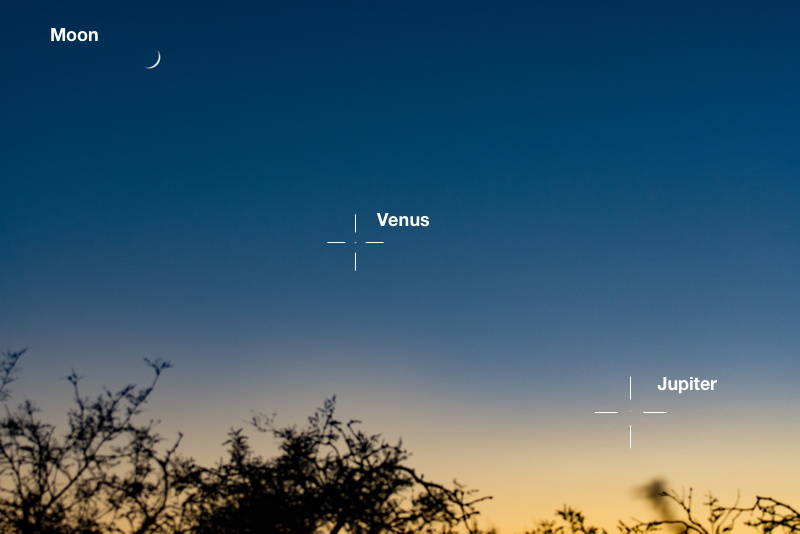
Click or tap on image for larger version without labels
1913 MST: Jupiter was now faintly visible as a naked eye object.
1917 MST: viewed Mars, 102X. Switched to the Zoom 8-24mm Eyepiece. Syrtis Major and a cloud on the limb were visible at 305X (8mm).
1920 MST: viewed Saturn, 102X. The moons Titan and Rhea were visible. Using 305X, the moons Dione and Tethys were also visible.
1929 MST: handheld D7200 DSLR photo of the crescent Moon with Earthshine and Venus (just above trees), f/4.5, 1/5sec, ISO 2500, FL 75mm:
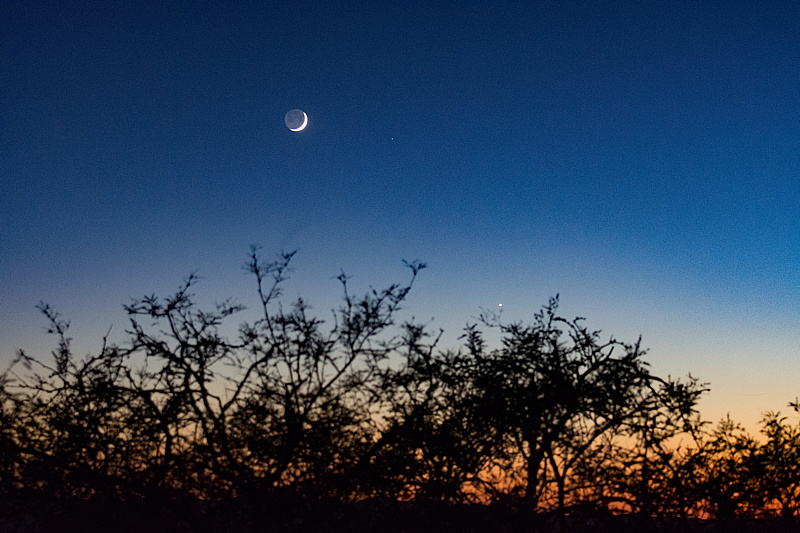
1935 MST: Mars, Saturn, and Antares, handheld D7200 DSLR, f/5, 1/2sec, ISO 4000, 70mm:
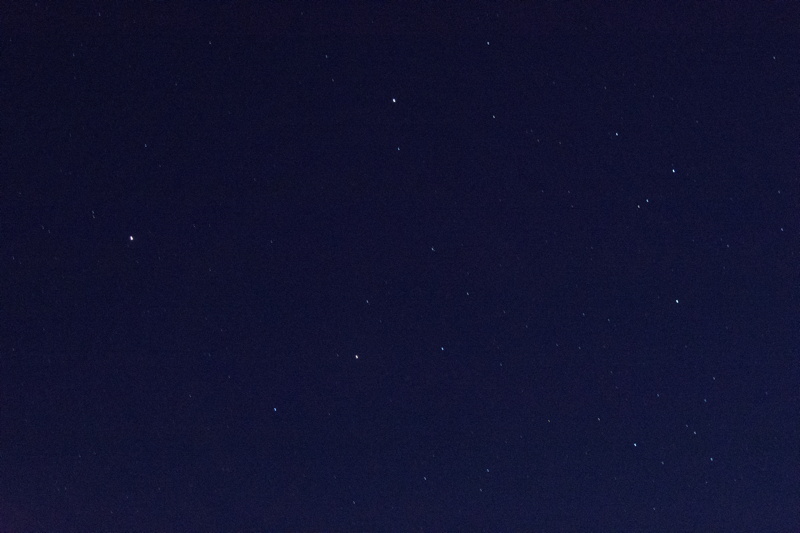
Mouseover or tap on image for labels
2000 MST: set up for iPhone sky photography using the iOS app NightCap Pro and the clip-on lens set I discussed on the previous report. Tried more tests using the fisheye lens but could not get a good focus, even if I manually adjusted the NCP focus setting. However, using the wide-angle lens I got a pretty good photo of Sagittarius, Scorpius, Mars, and Saturn in a 5 minute exposure, Star Trails mode:
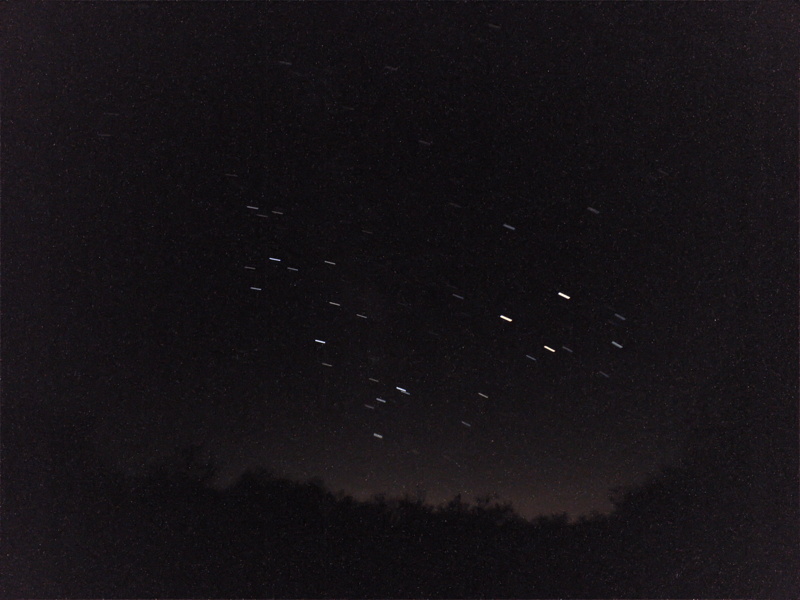
2041 MST: ended sky photography.
2107 MST: StarLock ON, High Precision ON. Did RA PEC update 1 and 2 using the StarLock. 2157 MST: PEC updates completed. With the initial set ups of the new 12" LX600 now completed, I could resume Deep Sky Object (DSO) astrophotography using the 12" telescope and StarLock.
GOTO NGC7331 (galaxy), StarLock centered it in the 2" 24mm UWA eyepiece (102X). GOTO NGC6050 (galaxy); nothing visible at 102X. GOTO M13 (Great Hercules Globular Cluster). Great view at 102X. SYNCed on M13. Back to NGC6050; still nothing visible, but it was getting low in the sky. Decided to try imaging it anyway.
SL/HP OFF. GOTO Alp Och for focus test using the focus mask. Mounted the D7200 DSLR at prime focus + focal reducer. I used the "focus lock bolt" (discussed on my 2 June 2016 report) to lock the focus. Then did a GOTO NGC6050. StarLock and High Precision ON. Set StarLock Guide Rates to RA=10% and DEC=10%. Trailing occurred with exposure of 5 minutes. Noticed that the StarLock Status was reporting errors >7, >3. Both values should be <2. Also noticed that the focus had shifted.
Set StarLock Guide Rates to 66% and 66%. SL OFF. GOTO M13. Focused on the HP centering star. With M13 centered turned the StarLock ON. This is a StarLock guided 1 minute exposure, ISO 3200 image, White Balance 4000K:
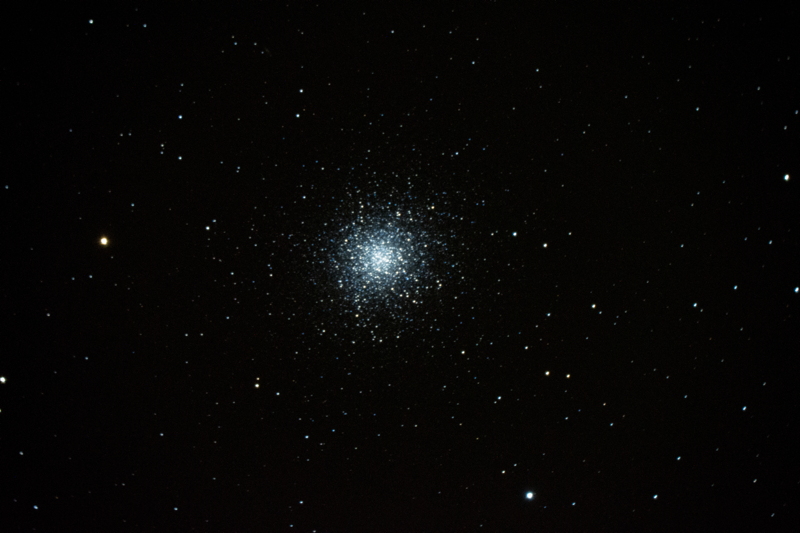
SL OFF, GOTO M57 (Ring Nebula), focused on HP centering star, then with M57 centered turned the StarLock ON. This is a 1 minute exposure, ISO 3200 image, White Balance 4000K:
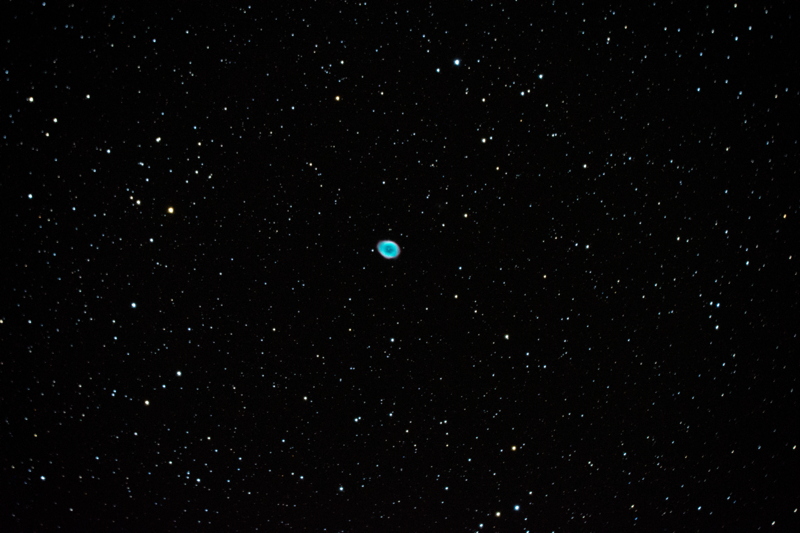
Repeated the same SL OFF/ON and focusing process for M16 (Eagle Nebula). This is a 1 minute exposure, ISO 6400 image, White Balance 4000K:
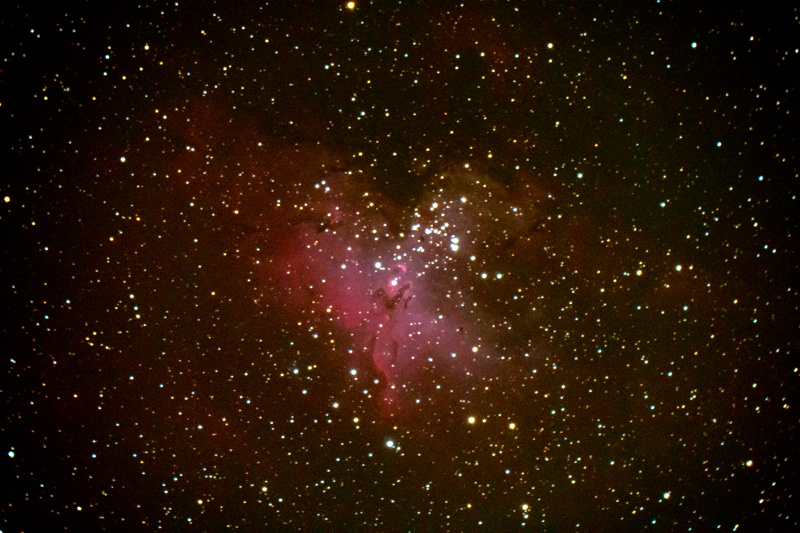
The images of M13, M57, and M16 were post-processed using Adobe Lightroom and then the Milky Way Finisher Photoshop Actions purchased from PhotographingSpace.com. The specific action used was "MiniSTARS 5". I plan to do more tests with these actions.
2324 MST: done imaging. I think I now have technique for image focusing with the 12" telescope. I have given up on using the focus lock bolt (still can't believe that Meade didn't design in a focus lock on the 12" LX600). By focusing the High Precision centering star I can achieve good focus for objects.
2335 MST: SL/HP OFF, removed camera. Viewed M16 (Eagle Nebula), 102X, but it was too low for good viewing. However, M57 (Ring Nebula), was a nice view, 102X. Then viewed the Double Cluster (open star clusters), 102X. Both clusters were in the same FOV; pretty view. Next, viewed the Pleiades (M45), 102X, but it was still too low in the eastern sky.
2345 MST: viewed M33 (Triangulum Galaxy), 102X. Really good view with lots of structure visible. Also viewed M33 with the 2" 30mm (81X) and 2" 50mm (49X) eyepieces; nice views but the 2" 24mm UWA (102X) eyepiece provided the best view.
I then began closing up after this six hour session. Will do additional StarLock long exposure guiding tests on the next session.
|
Close: Sunday, 4 September 2016, 0026 MST Temperature: 69°F |
Session Length: 6h 00m Conditions: Clear |
I have posted some photos of our vacation trip last month.
Comments are welcome using Email. Twitter users can use the button below to tweet this report to your followers. Thanks.
Cassiopeia Observatory Home Page
Copyright ©2016 Michael L. Weasner / mweasner@me.com
URL = http://www.weasner.com/co/Reports/2016/09/04/index.html
